Last Chance to Catch NYC's Holiday Notalgia Train
We met the voices of the NYC subway on our nostalgia ride this weekend!


Is Governors Island haunted? This was a question we received more frequently before the transformative redevelopment and construction efforts by The Trust for Governors Island in recent years. Some of the well-known “abandoned” spots on Governors Island in the past, including a Burger King and a bowling alley from the Coast Guard era, are no longer standing. But one of our favorite gems, hidden from plain sight, is the former basketball court inside Liggett Hall — a place frozen in time from when it was used by the U.S .Coast Guard.
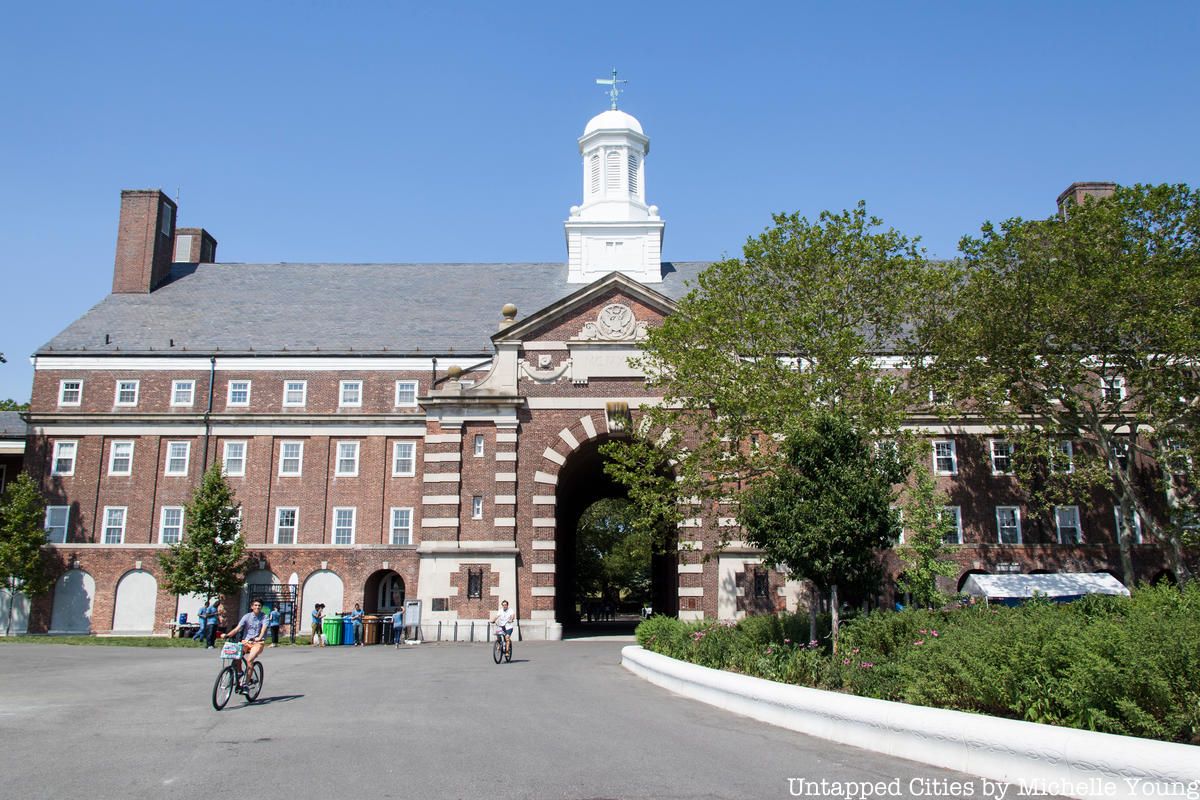
Governors Island has a long history, first called Pagganuck (meaning Nut Island) by the Native Americans and later Noten Eylant by the Dutch. It served as the military base for the British during the 7 Years War (French and Indian) and again during the American Revolution when they occupied all of New York City. Located at the convergence of the East River and Hudson River, Governors Island remained, as before, a strategic military location during the American Revolution.
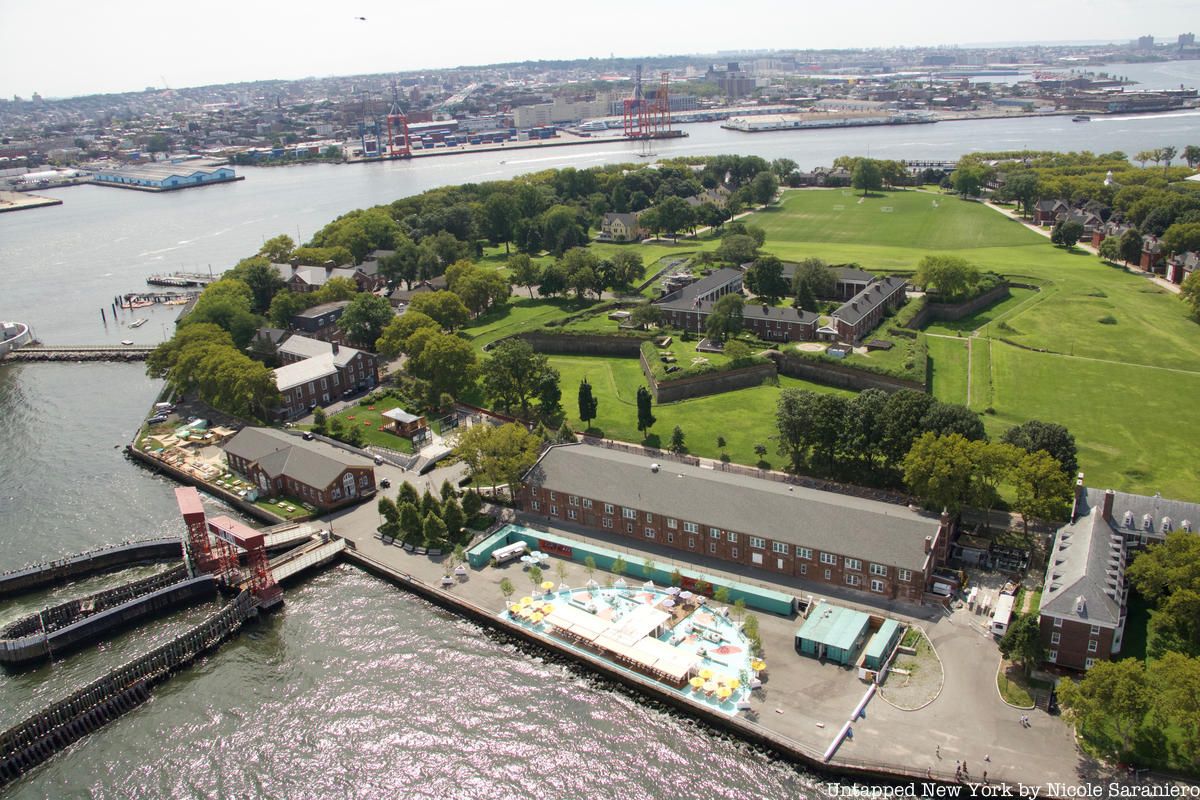
Fort Jay, Castle Williams, and the South Battery were built in between 1806 and 1811 and active during the War of 1812. Both Fort Jay and Castle Williams were used as jails for prisoners of war during the Civil War. However, a large portion of Governors Island that we know today did not exist until the early 20th century. In fact, 60% of Governors Island is actually built on landfill excavated from the construction of the Lexington Avenue 4/5/6 subway lines.
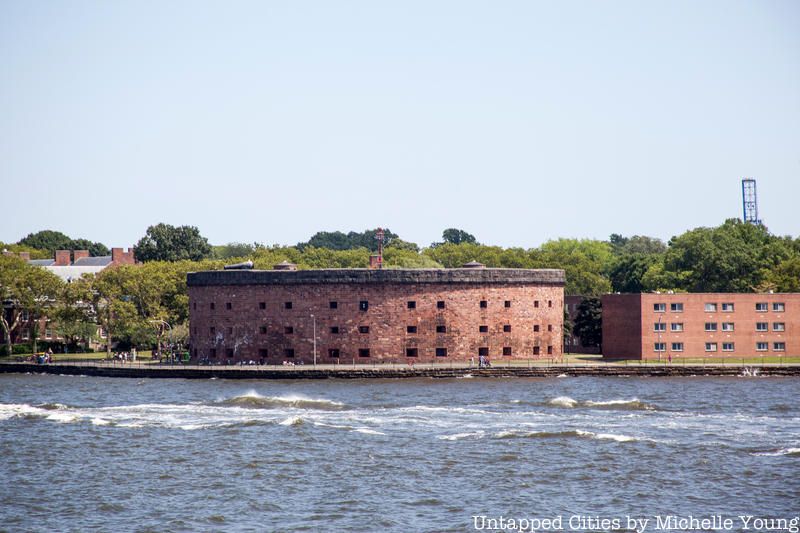
The 103 additional new acres were planned out by the famed architectural firm McKim, Mead and White, which first produced an expansion plan in 1902. Not much happened until the late 1920s however, and activity in World War I was limited to a large number of “hastily constructed…wood frame storehouses on this new land,” according to the New York City Landmarks Preservation Commission’s Designation Report for Governors Island.
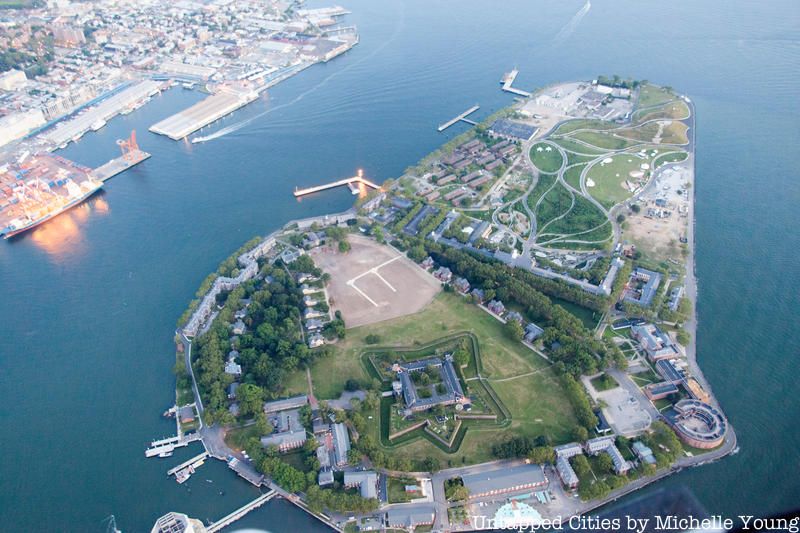
McKim, Mead and White created another plan for Governors Island in 1928. The subsequent “Island Beautiful” program used elements of both the 1902 and 1928 plans. According to the Landmarks Preservation Commission, this period of building on “featured buildings of a scale previously unknown here.” The centerpiece of the “Island Beautiful” program was Building 400, later named Liggett Hall, which was the largest military building ever constructed in the world at the time.
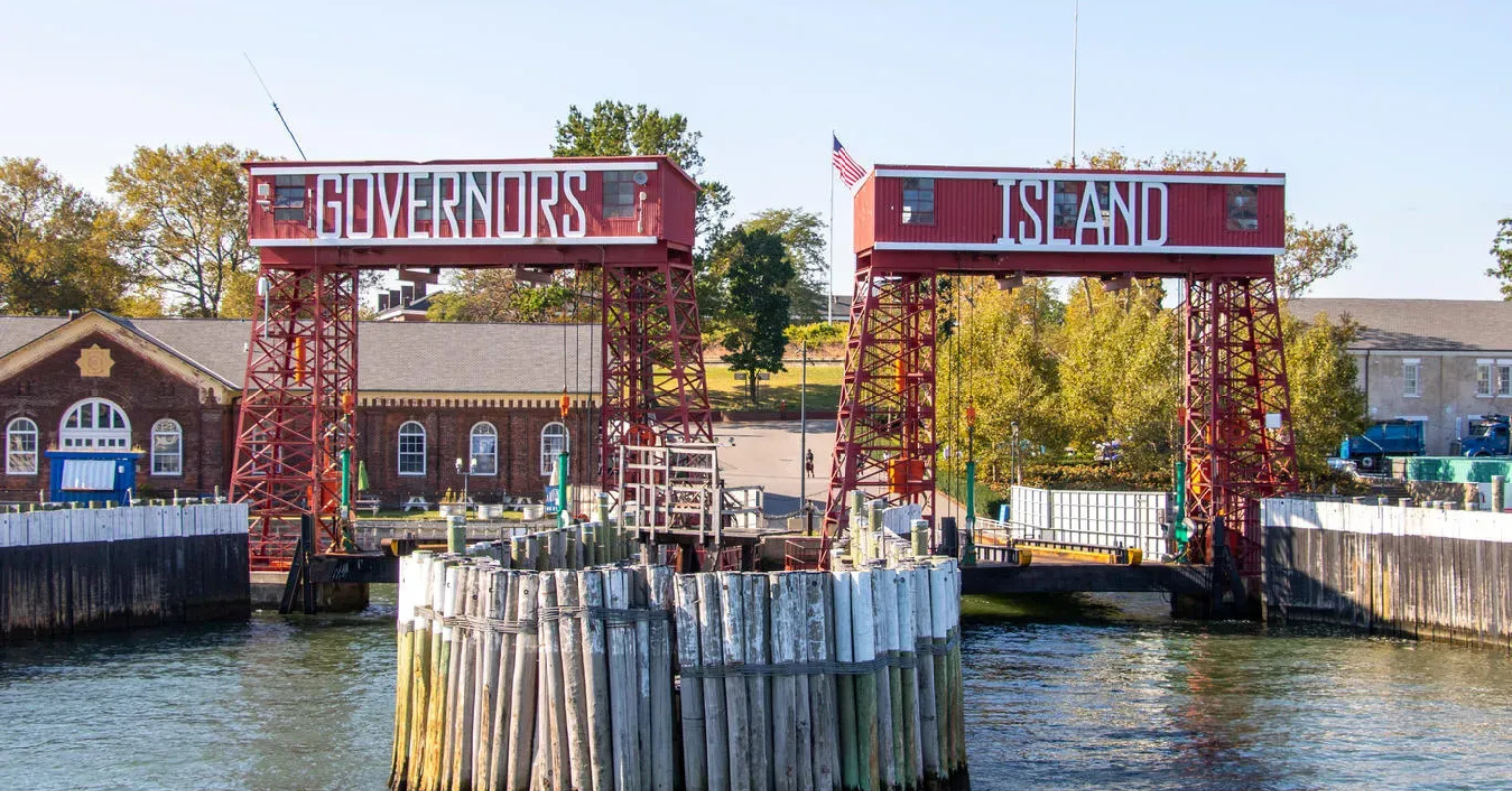
Escape to Governors Island and uncover the hidden stories of this former military outpost turned urban oasis.
Liggett Hall was built between 1929 and 1930, with McKim, Mead and White as the architects and the Construction Division of the Office of the Quartermaster General as the builders. $1,086,000 was allocated to construct the building, with $30,000 for architects’ fees. Made of Neo-Georgian brick and reinforced concrete building, Liggett Hall is the size of the Chrysler Building on its side.
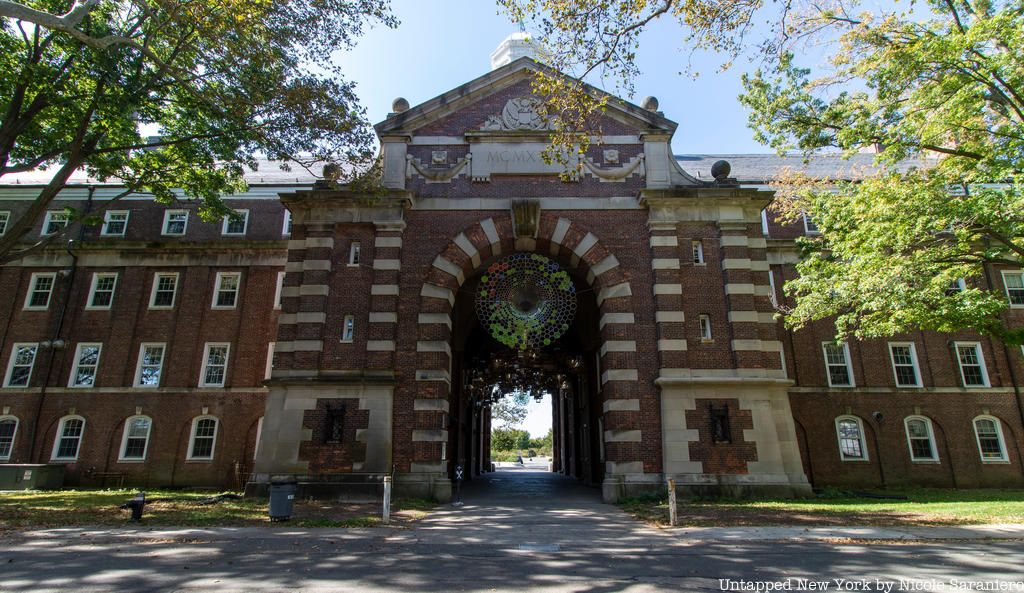
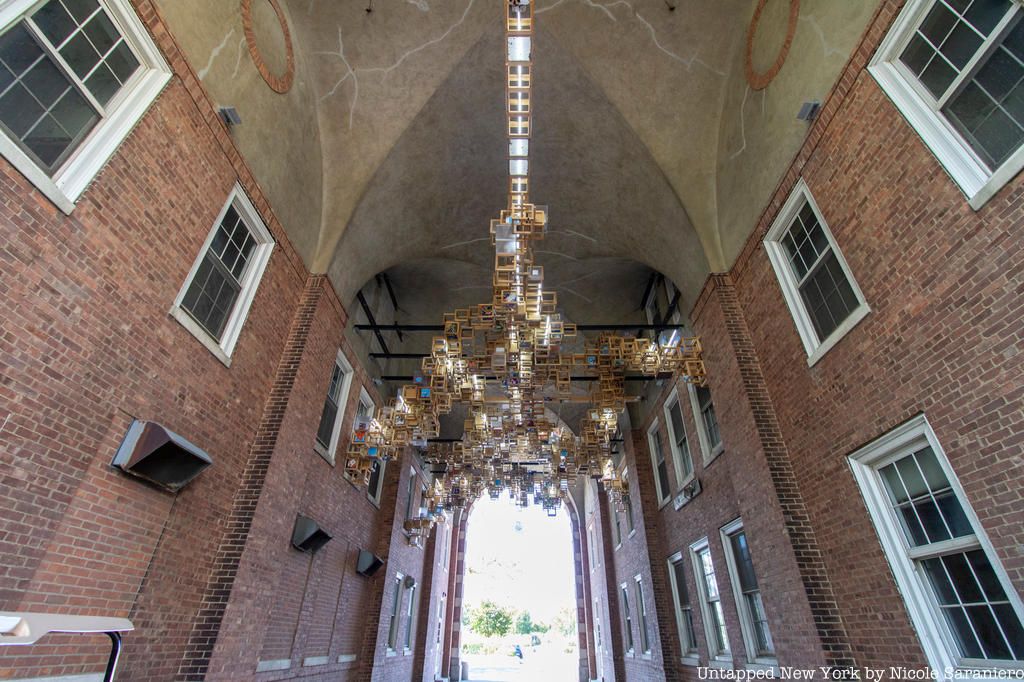
It was used first to house 1,375 men belonging to the 16th Infantry Regimental Barracks, an infantry group that was part of the Second Corps, which had its headquarters on Governors Island between World War I and World War II. In 1957, Building 400 was rechristened Liggett Hall, in honor of the First Army commander Lieutenant General Hunter Liggett.
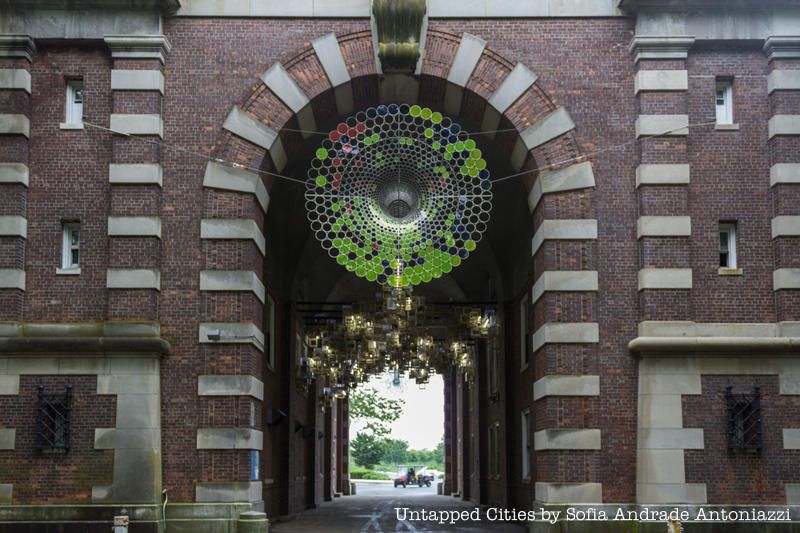
“While Building 400 introduced an unprecedented scale to the island’s mix of buildings,” wrote the the Landmarks Preservation Commission, “it reflected the island’s historic associations through its materials, its skillful articulation of detail, and and its architectural references to Fort Jay. In particular, its monumental archway echoes and is on axis with the fort’s sallyport.” Today, Liggett Hall still serves as a gateway between the original part of Governors Island (the ice cream) and the newer landfill portion (the cone). An annual art installation is placed inside the archway of Liggett Hall, beckoning visitors to pass the threshold that invisibly divides the centuries.
Liggett Hall remains on the list of buildings that have not been renovated or repurposed yet, and is rarely accessible to the public. We were fortunate to visit the building on two occasions last year to document the interior of the building.
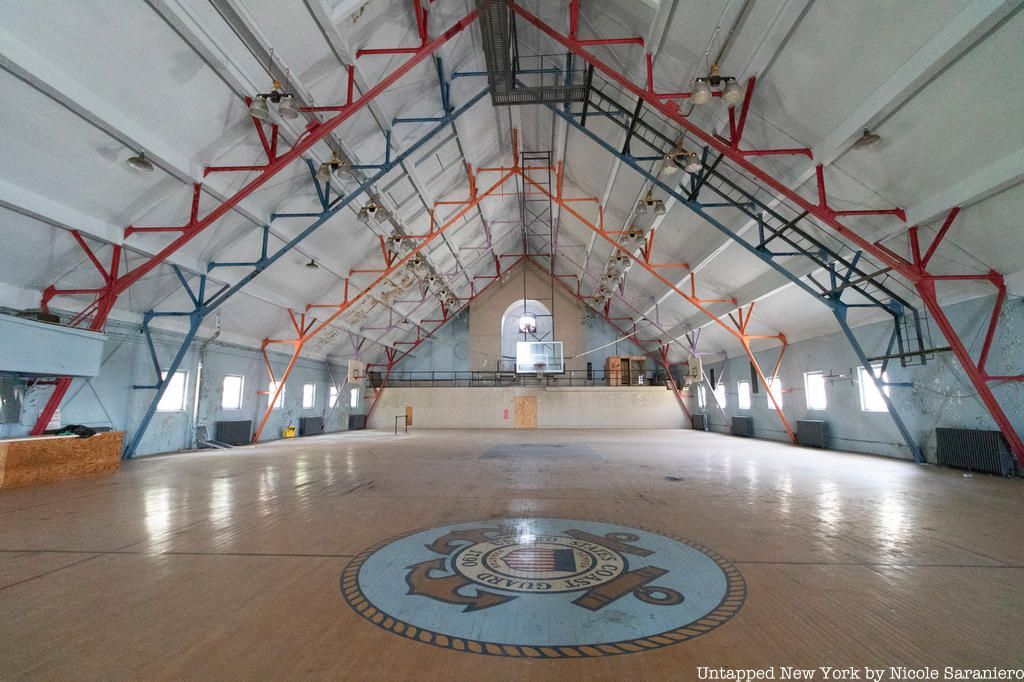
The lower level, which once featured an arcade, was enclosed in the 1950s to allow for smaller squadrons of the Coast Guard to live and train in self-contained areas. Each section had a kitchen, mess rooms, classrooms, bunks, rooms for officers, and storage. A drill hall for everyone was located on the upper level. During this era, Liggett Hall housed just 807 men, instead of the 1,375 in the original design.
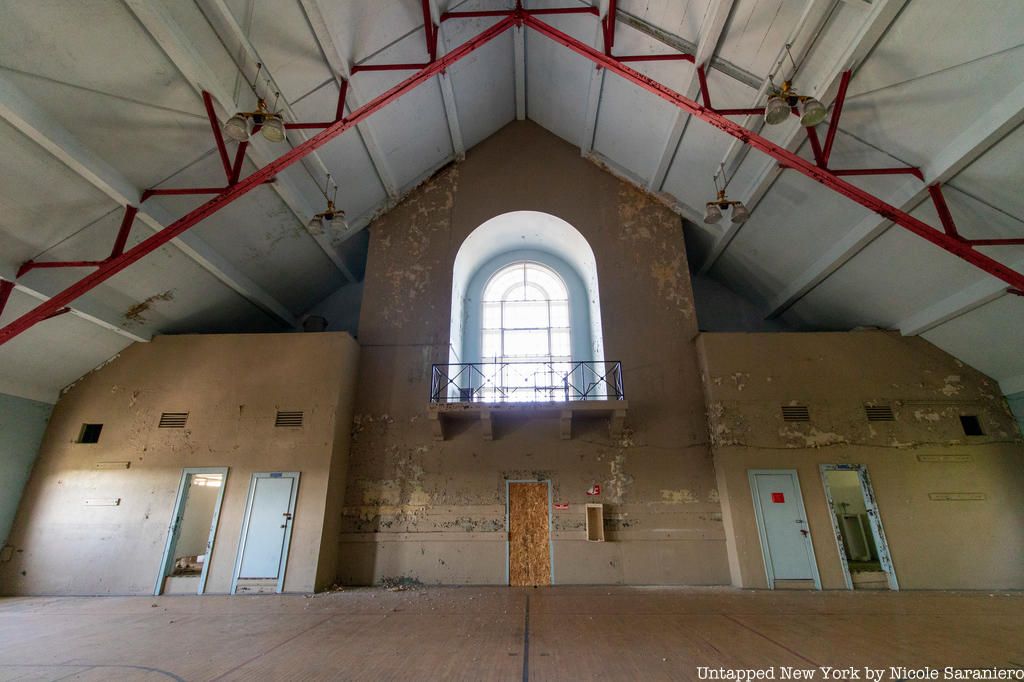
The basketball court inside Liggett Hall remains untouched since the end of the Coast Guard period in 1995. The paint is peeling from the walls, painted in that light blue so common in institutional building, but the wood floor remains in great condition. Structural beams, painted in red, blue and orange, highlight the grand dimensions of the space.
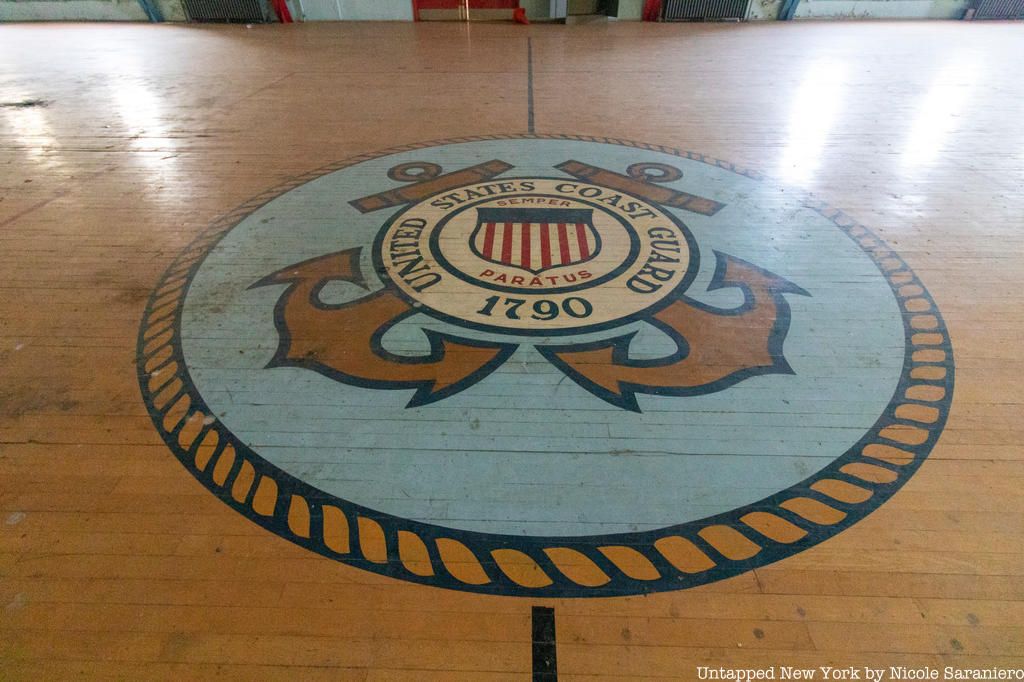
A seal of the Coast Guard, in a version not used today that contains the Latin motto Semper Paratus (Always Ready) is on the court floor. Light flows in from the row of windows on both sides, along with the two arched windows on the ends. It’s not quite haunted, but you can almost hear the sounds of sneakers squeaking on the beams of the wood floors and the echoes of mens’ voices bouncing off the high ceilings.
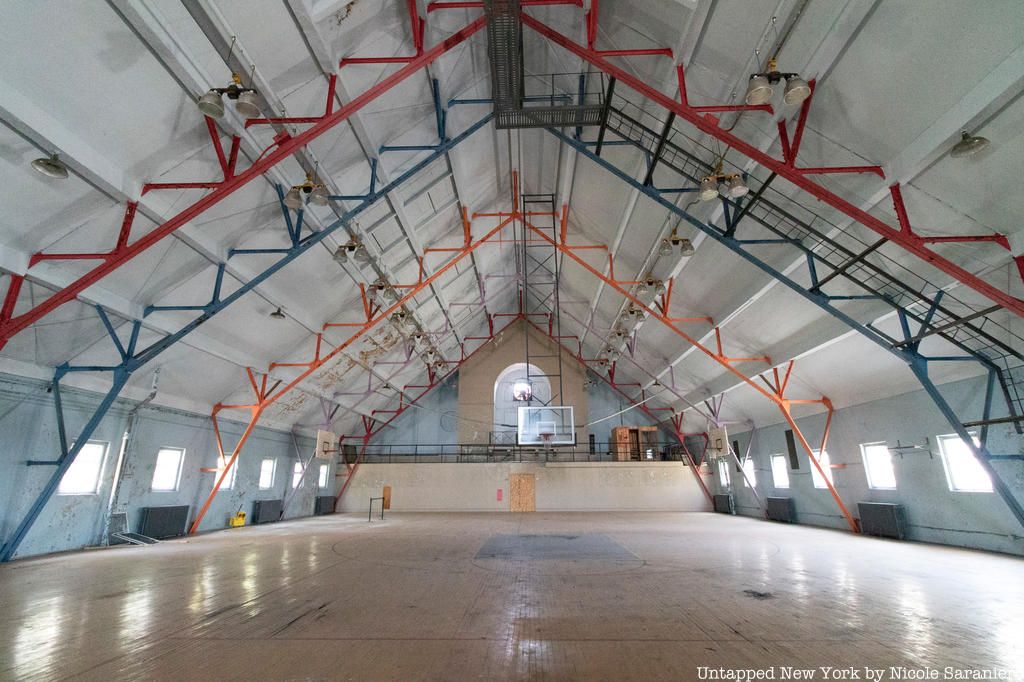
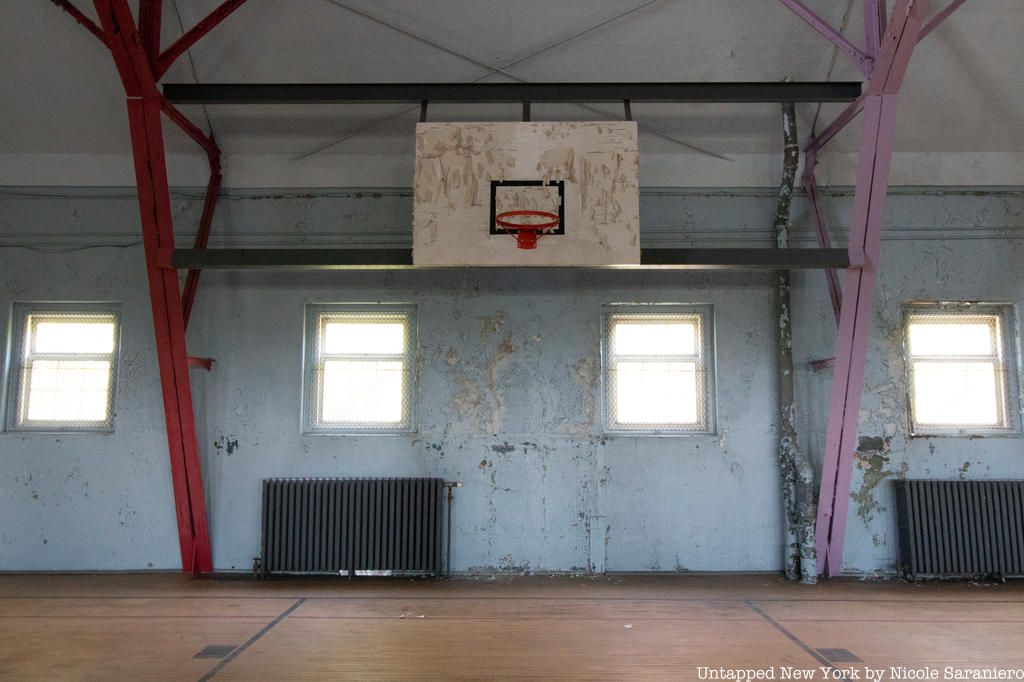
Join our upcoming tours of the Hidden Gems of Governors Island! This tour, led by Mandy Edgecombe, a former National Park Service Ranger, will not go into this basketball court but will cover many buildings on the former military and Coast Guard base, as well as the exciting newer developments on the island.
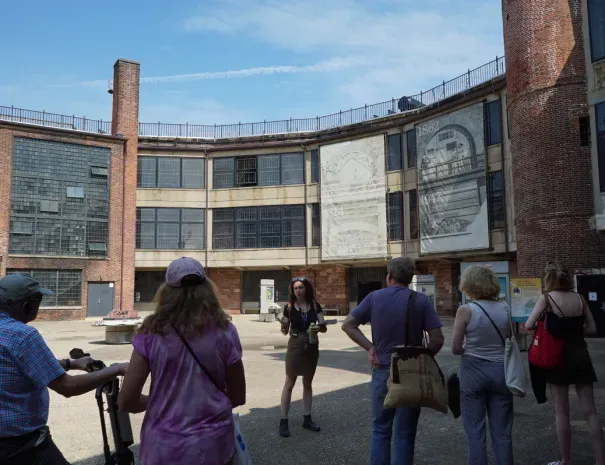
Escape to Governors Island and uncover the hidden stories of this former military outpost turned urban oasis.
Subscribe to our newsletter